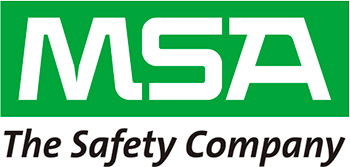Industrial protective helmets are classified by impact type and electrical class per ANSI Z89.1-2014*. All protective helmets are required to meet either Type I or Type II requirements. If hazard potential is for top impact, a Type I helmet should be considered. If hazards are present that can impact the front, back and sides, as well as the top of a helmet, use of a Type II helmet should be considered. If application hazards are present that may cause a helmet to dislodge from a user’s head, use of a chinstrap should be considered for additional safety and helmet retention.
Type I Helmets
Type I helmets are designed to reduce impact force as a result of a blow to only the top of the head. There are four specific performance requirements for Type I helmets: 1. Flammability
- No flame can be visible for five seconds after removing the test flame from the helmet surface.
2. Force transmission
- A single helmet must not transmit force to the test head form exceeding 1,000 pounds of force.
- Conditioned helmets (hot and cold) shall be averaged, and the average cannot exceed 850 pounds of force to the test head form.
3. Apex penetration
- The penetrator cannot make contact with the top of the head form.
4. Electrical classification (Class G, Class E or Class C)
- Class G and Class E helmets must meet appropriate performance requirements.
- Class G to withstand 2,200 volts for one minute. Maximum leakage shall not exceed three milliamperes.
- Class E to withstand 20,000 volts for three minutes after impact. Maximum leakage shall not exceed nine milliamperes.
- Class C helmets are not tested for electrical insulation.
MSA Type I Helmets
V-Gard® Caps and Hats V-Gard 500 Caps and Hats SmoothDome® Caps Topgard® Caps and Hats Thermalgard® Caps Skullgard® Caps and Hats
Type II Helmets
Type II helmets are designed to reduce impact force as a result of a blow to the top or sides of the head. In addition to the four performance requirements of a Type I helmet, Type II performance criterion contains three additional requirements: 1. Flammability 2. Force transmission 3. Apex penetration 4. Electrical classification (Class G, Class E or Class C) 5. Impact energy attenuation
- Helmet is dropped onto a spherical object at various angles around the helmet, above a designated test line.
6. Off-center penetration
- A penetrator is dropped vertically, and the helmet is rotated at different angles above a designated test line. The penetrator cannot contact the headform.
7. Chinstrap retention (optional)
- If a Type II helmet is provided with a chin strap, chin strap must be tested for retention, must remain attached to the helmet and must not stretch beyond one inch in length.
MSA Type II Helmets
Super V® Helmets Vanguard™ Helmets For more information on these helmets, visit MSAsafety.com. * For additional information, visit https://safetyequipment.org/standard/ansiisea-z89-1-2014/. Note: This Bulletin contains only a general description of the products shown. While uses and performance capabilities are described, under no circumstances shall the products be used by untrained or unqualified individuals and not until the product instructions including any warnings or cautions provided have been thoroughly read and understood. Only they contain the complete and detailed information concerning proper use and care of these products.

